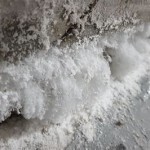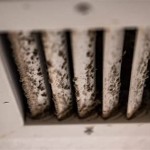How to Effectively Waterproof a Basement
Waterproofing a basement is crucial to prevent moisture damage, mold growth, and other costly problems. Here's a comprehensive guide on how to effectively waterproof your basement:
1. Determine the Source of Moisture
Before waterproofing, it's essential to identify the source of moisture. Check for cracks in the foundation, leaky plumbing, or condensation from high humidity levels. Addressing the source will prevent future water penetration.
2. Exterior Waterproofing
Exterior waterproofing methods focus on preventing water from entering the basement from outside. Some techniques include:
- Grading and Drainage: Slope the soil around the foundation to direct water away from the house. Install drainage systems, such as gutters and downspouts, to divert rainwater.
- Foundation Coatings: Apply waterproof membranes or coatings to the exterior foundation walls. These sealants prevent water from penetrating through cracks or holes.
- French Drain: Dig a trench around the perimeter of the foundation and line it with a perforated pipe wrapped in filter fabric. The pipe collects water and directs it away from the house.
3. Interior Waterproofing
Interior waterproofing methods aim to manage moisture that has already entered the basement. Some solutions include:
- Sump Pump: A device that pumps water out of the basement when the water level rises. It's installed in a sump pit and activated by a float switch.
- Vapor Barrier: A plastic or aluminum barrier installed on the basement walls or ceiling to prevent moisture from evaporating into the air.
- Dehumidifier: A machine that removes excess humidity from the air, preventing condensation on walls and ceilings.
4. Wall and Floor Coatings
Waterproofing wall and floor surfaces can help seal cracks and prevent water absorption. Options include:
- Basement Paint: Special waterproof paints designed to seal small cracks and protect against moisture.
- Waterproofing Sealers: Liquid or spray-on sealers that penetrate surfaces and form a waterproof barrier.
- Epoxy Coatings: Durable coatings that provide a glossy, waterproof finish to basement floors.
5. Regular Inspection and Maintenance
Once your basement is waterproofed, regular inspections and maintenance are crucial to ensure its effectiveness. Check for cracks, leaks, or any signs of moisture. Clean gutters and downspouts regularly, and have a professional inspect the waterproofing system periodically.
Conclusion
Waterproofing a basement is a comprehensive project that involves various methods and materials. By following these steps and considering your specific basement conditions, you can effectively prevent water damage, ensure a dry and healthy basement, and protect your home's value.

The 3 Major Approaches To Basement Waterproofing News And Events For Systems Inc

Diy Basement Waterproofing Tips In Gaithersburg Md

How To Waterproof Basement Walls From Inside Sani Tred

Waterproofing Basement Floor Slabs And Walls Waterproof Magazine

5 Steps For How To Waterproof Basement Walls From The Inside Wise Cracks

How To Waterproof Your Basement True Value

Waterproofing Your Home Mid Construction Ohio Basement Authority

How Does Interior Basement Waterproofing Work

How To Waterproof A Basement Inside Out Budget Dumpster

How To Waterproof An Existing Basement Dry Direct
Related Posts







